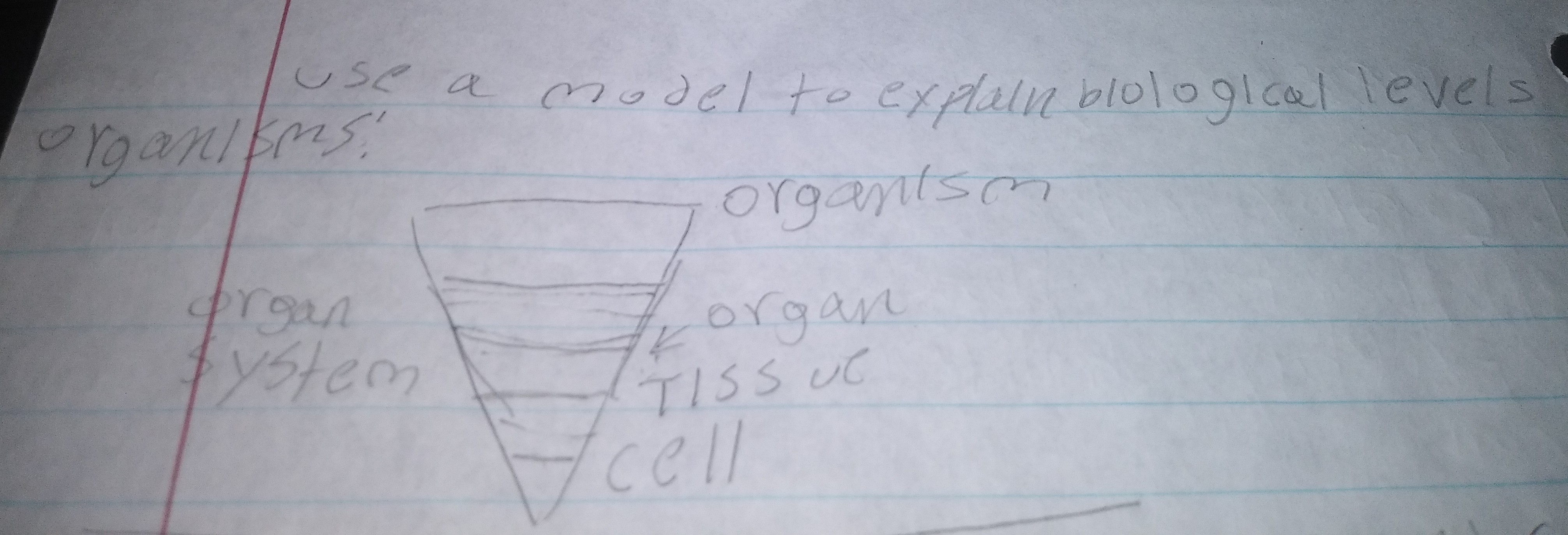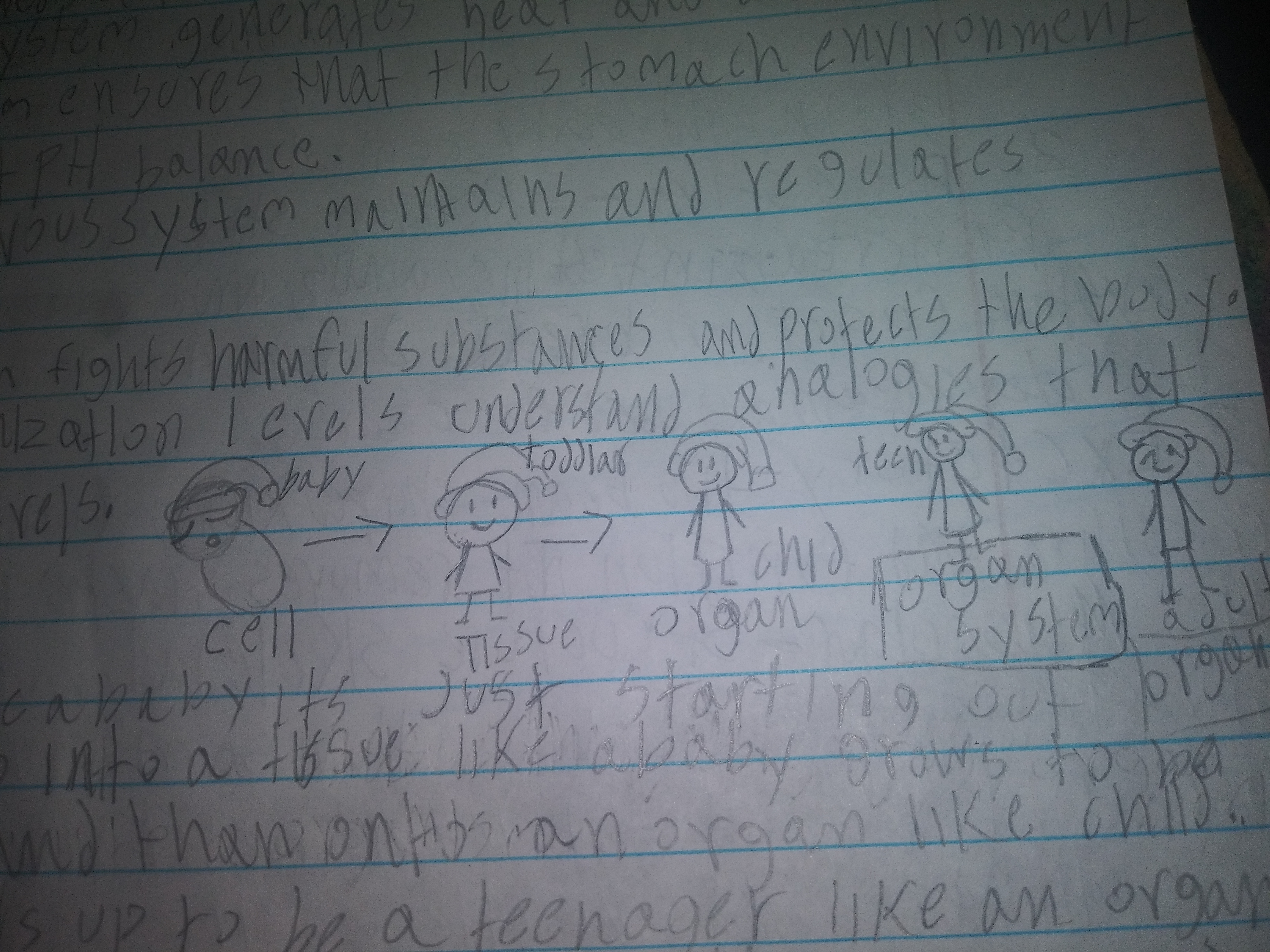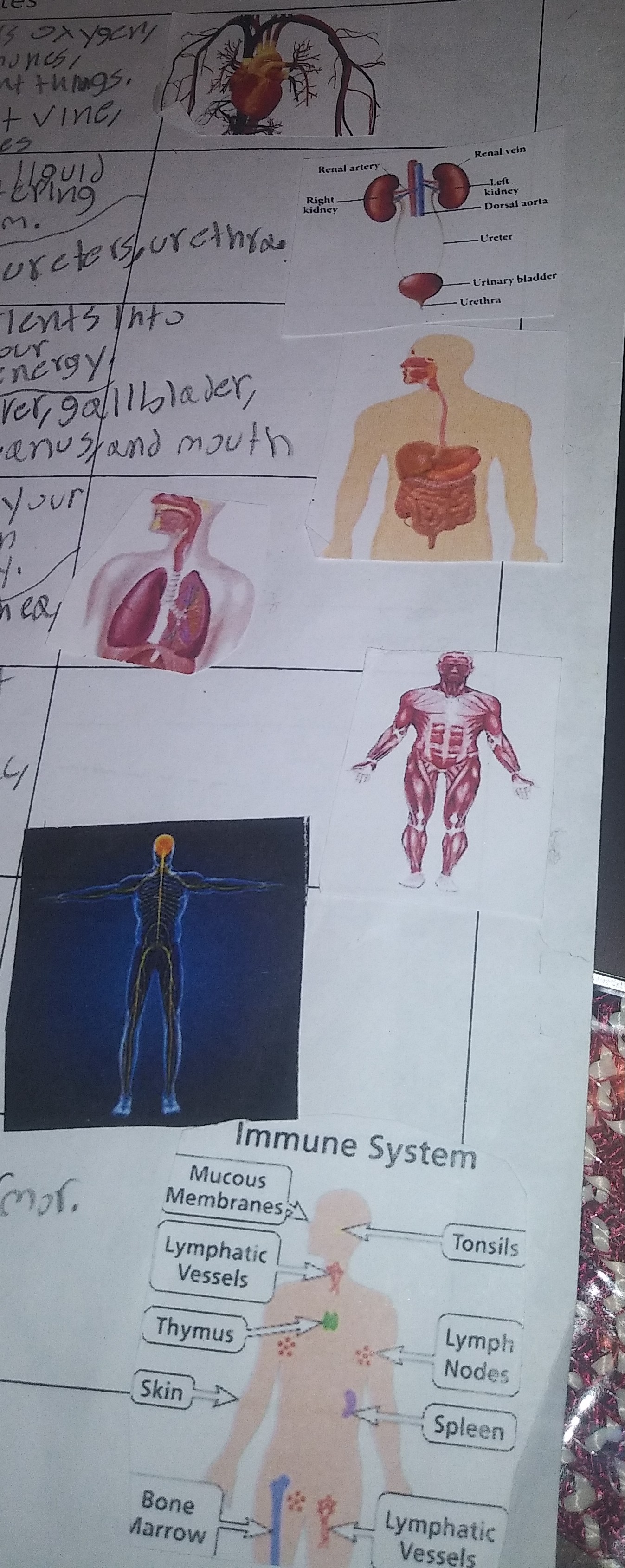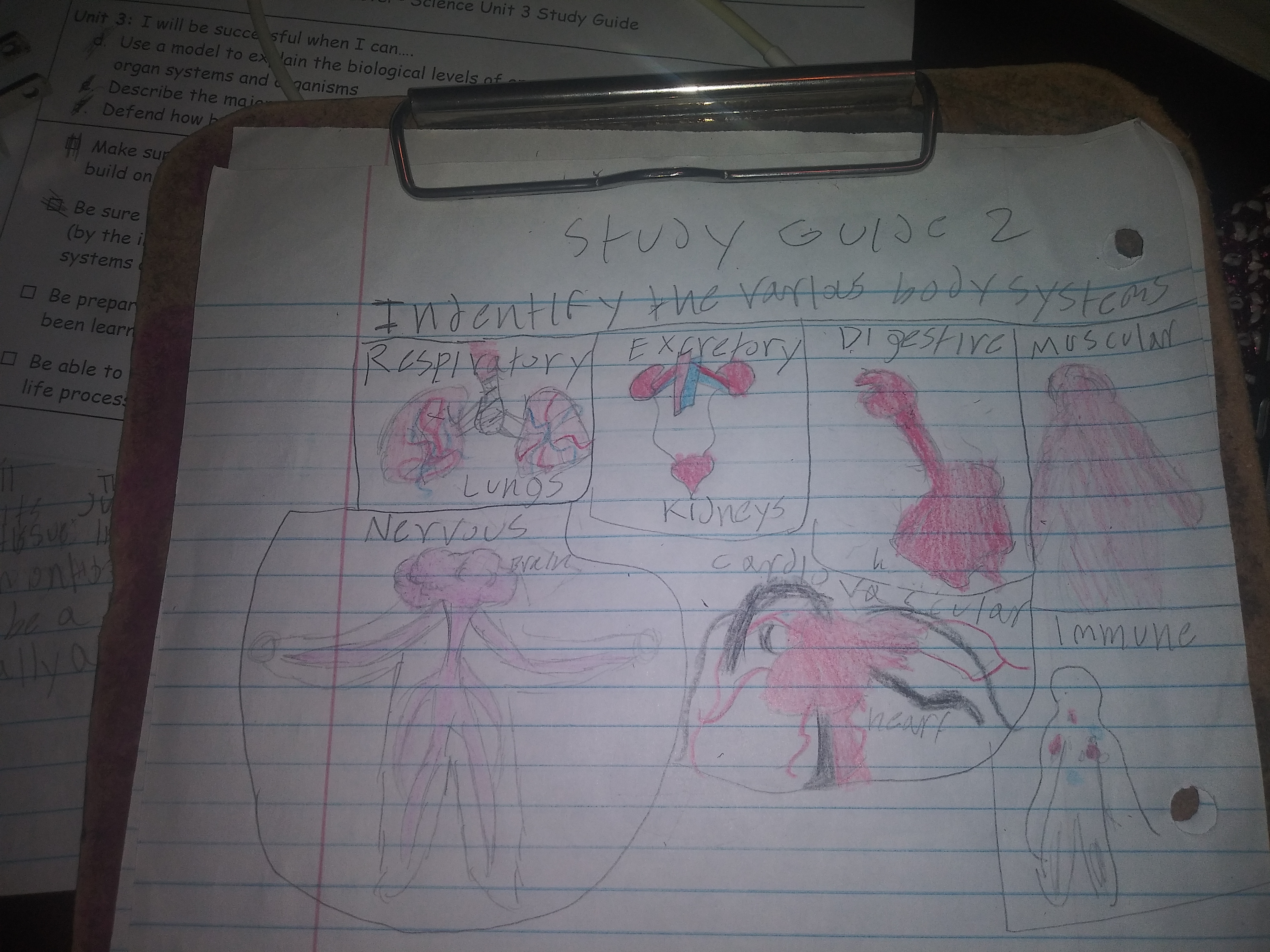unit test study guide
0.0(0)
0.0(0)
Card Sorting
1/21
Earn XP
Description and Tags
Study Analytics
Name | Mastery | Learn | Test | Matching | Spaced |
|---|
No study sessions yet.
22 Terms
1
New cards
Use a model to explain the biological levels of organization from cells, tissues, organs,
organ systems and organisms
organ systems and organisms
Cells, tissue, organs, organ systems, organism

2
New cards
Make sure you know the cellular organization levels and understand analogies that
build on each other to help you explain the levels.
build on each other to help you explain the levels.
cells, tissue, organ. organism system, organism
Analogy: A cell is like a baby its just starting out it evolves into a tissue like a baby grows to be a toddler tan into an organ like a child. Than into a teenager like an organ system and finally an adult (organism)
Analogy: A cell is like a baby its just starting out it evolves into a tissue like a baby grows to be a toddler tan into an organ like a child. Than into a teenager like an organ system and finally an adult (organism)

3
New cards

Be sure you are able to identify the various body systems that we have been studying
(by the image of their overall system as well as by the individual organs that the
systems are composed of.)
(by the image of their overall system as well as by the individual organs that the
systems are composed of.)

4
New cards
Describe the major structures and functions of the nervous system
The Structure is brain and spinal cord and its function is that it sends signals between the brain and the body. It controls the body activities
5
New cards
Describe the major structures and functions of the muscular system
Structure: skeletal, cardiac, and smooth muscles.
Function: allows movement in the body.
Function: allows movement in the body.
6
New cards
Describe the major structures and functions of the Digestive system
Structure: stomach, liver, gall bladder, pancreas, intestine, anus, and mouth.
Function: Breaks down nutrients small enough for our body to absorb for energy.
Function: Breaks down nutrients small enough for our body to absorb for energy.
7
New cards
Describe the major structures and functions of the Excretory system
Structure: kidney, bladder, ureters, urethra.
Function: removing liquid waste and filtering your blood stream.
Function: removing liquid waste and filtering your blood stream.
8
New cards
Describe the major structures and functions of the cardiovascular system
Structure: heart vine, arteries, capillaries.
Function: Delivers oxygen, nutrients, hormones, and other important things.
Function: Delivers oxygen, nutrients, hormones, and other important things.
9
New cards
Describe the major structures and functions of the respiratory system
Structure: Lungs, nose, windpipe, and Trachea (throat)
Function: Bring oxygen into your body also sends carbon dioxide out of the body.
Function: Bring oxygen into your body also sends carbon dioxide out of the body.
10
New cards
Describe the major structures and functions of the immune system
Structure: Leukocytes, phagocytes, bone marrow, spleech, Lymph nodes
Function: keeps body healthy and alive also attacks harmful substances.
Function: keeps body healthy and alive also attacks harmful substances.
11
New cards
Be prepared to explain the MAIN purpose of immune system
Protects body by fighting off harmful substances
12
New cards
Be prepared to explain the MAIN purpose of the nervous system
controls all activities of the body by sending signals between the brain and the body.
13
New cards
Be prepared to explain the MAIN purpose of the Digestive system
breaks down nutrients small enough for the our body to absorb as energy
14
New cards
Be prepared to explain the MAIN purpose of the Executory system
removing liquid waste and filtering your bloodstream
15
New cards
Be prepared to explain the MAIN purpose of the respiratory system
respiratory system: bring oxygen into our bodies.
16
New cards
Be prepared to explain the MAIN purpose of the cardiovascular
cardiovascular system: (your heart and blood vessels) supplies your body's organs with oxygen and nutrients so your organs can do their jobs.
17
New cards
Defend how body systems work together to maintain homeostasis
1.Cardiovascular controls the blood circulation and sends blood to the tissue and organs.
2. The Excretory system removes toxins from the body and keeps concentration of nutrients, water stable and minerals.
3. Respiratory system controls the balance of oxygen and carbon dioxide in the body and the changing breathing rate to meet the demands of the energetic body.
4. Muscular system generates heat and causes movement.
5. Digestive system ensures that the stomachs environment has the right PH balance.
6. The nervous system maintains and regulates homeostasis.
7. Immune system protects the body by fighting harmful substances.
2. The Excretory system removes toxins from the body and keeps concentration of nutrients, water stable and minerals.
3. Respiratory system controls the balance of oxygen and carbon dioxide in the body and the changing breathing rate to meet the demands of the energetic body.
4. Muscular system generates heat and causes movement.
5. Digestive system ensures that the stomachs environment has the right PH balance.
6. The nervous system maintains and regulates homeostasis.
7. Immune system protects the body by fighting harmful substances.
18
New cards
Be able to explain how two or more body systems work together to carry out various life processes.
Execratory system and the cardiovascular
Execratory system and the cardiovascular
The excretory system filters out
excess fluid, salts and toxins from your
cardiovascular system (bloodstream) using kidneys
and bladder.
excess fluid, salts and toxins from your
cardiovascular system (bloodstream) using kidneys
and bladder.
19
New cards
Be able to explain how two or more body systems work together to carry out various life processes.
Respiratory and digestive and cardiovascular
Respiratory and digestive and cardiovascular
Cardiovascular circulates blood to
deliver oxygen (respiratory) and nutrients (digestive)
to every part of the body.
deliver oxygen (respiratory) and nutrients (digestive)
to every part of the body.
20
New cards
Be able to explain how two or more body systems work together to carry out various life processes.
Nervous and muscular system
Nervous and muscular system
Nervous system receives and
interprets stimuli in the environment and signals
muscular system to move.
interprets stimuli in the environment and signals
muscular system to move.
21
New cards
Be able to explain how two or more body systems work together to carry out various life processes.
Muscular and cardiovascular
system
Muscular and cardiovascular
system
Muscle tissue is also found inside of the heart, digestive organs, and blood vessels that help move substances throughout the body.
22
New cards
Be able to explain how two or more body systems work together to carry out various life processes.
Nervous and immune system
Nervous and immune system
nervous system allows the immune system to engage the rest of the body in the fight against infection by sending signals